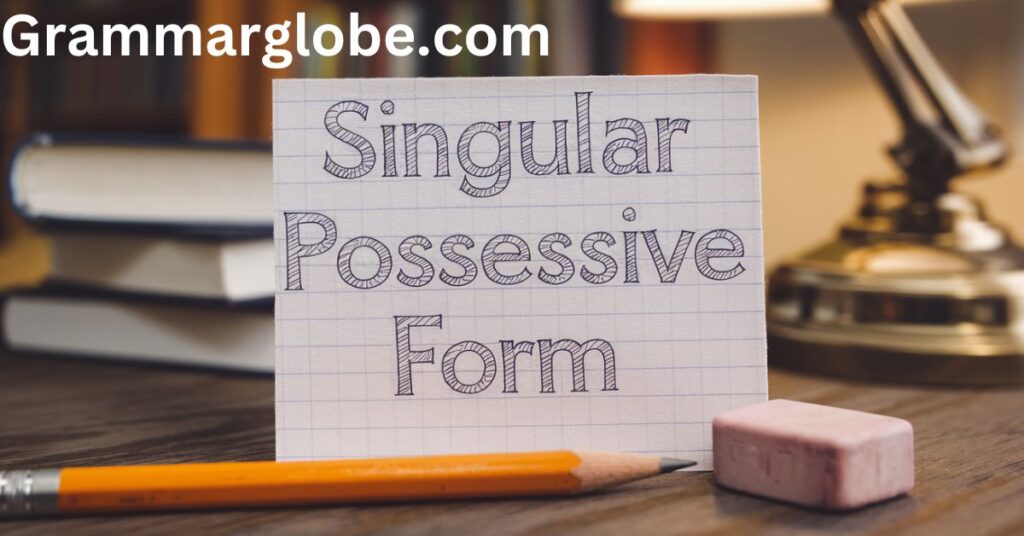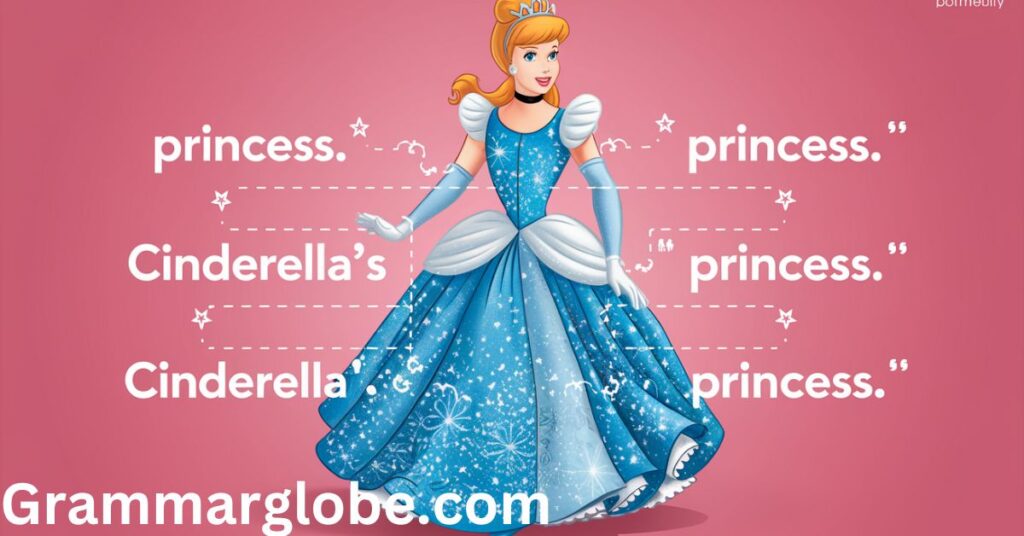English grammar can be tricky, especially when dealing with possessive forms of singular nouns ending in -s, such as “princess.” Questions like, “Should it be ‘the princess’ crown’ or ‘the princess’s crown’?” are common. Both forms can be correct depending on the style guide you follow. This article takes a detailed dive into Understanding “Princess’ or Princess’s”, helping you grasp singular and plural possessive forms, learn the rules for proper apostrophe usage, and avoid common mistakes.
By the end of this guide, you’ll have the tools to write confidently and clearly, whether addressing a single princess or a kingdom full of them.

Singular and Plural Forms: A Refresher
Before exploring possessive forms, it’s essential to understand the basics of singular and plural nouns. This foundation will help you distinguish between singular possessive and plural possessive constructions Understanding “Princess’ or Princess’s” .
Singular Form
A singular noun refers to one person, place, thing, or idea. The word princess is a singular noun. For example:
- “The princess is preparing for the royal ball.” Here, the word “princess” refers to a single individual.
Plural Form
The plural of princess is formed by adding -es to create princesses. This denotes more than one princess:
- “The princesses are gathering for the state ceremony.”
Understanding the difference between singular and plural forms is the first step in correctly applying possessive rules.
Understanding Possessive Forms
Possessive forms indicate ownership or association. For example:
- “The princess’s crown” means the crown belongs to one princess.
- “The princesses’ duties” means the duties belong to several princesses.
Singular Possessive Form
Understanding “Princess’ or Princess’s” To show possession for a singular noun ending in -s, like princess, add an ’s:
- “The princess’s gown was adorned with jewels.” This indicates that the gown belongs to one princess.
Some style guides, such as the Chicago Manual of Style, require this format universally, while others, like the AP Stylebook, allow dropping the final s after the apostrophe:
- AP Style: “The princess’ gown.”

Plural Possessive Form
For plural nouns that end in -es, such as princesses, add only an apostrophe after the final s:
- “The princesses’ schedules are packed with engagements.” This shows that the schedules belong to multiple princesses.
If the plural form doesn’t end in -s, such as with irregular plurals (e.g., children), add ’s:
- “The children’s playground was renovated.”
Why the Apostrophe Placement Matters
The placement of the apostrophe changes the meaning of a sentence:
- Singular Possessive: “The princess’s dress was elegant.” (One princess owns the dress.)
- Plural Possessive: “The princesses’ dresses were displayed.” (Multiple princesses own the dresses.)
Common Confusion: Understanding “Princess’ or Princess’s?”
The Rule
Understanding “Princess’ or Princess’s” In most cases, the possessive form of a singular noun, including those ending in -s, takes ’s. However, American English allows flexibility based on the style guide:
- Chicago Style: Always add ’s for singular possessives.
- Example: “The princess’s gown.”
- AP Style: Use only an apostrophe for singular possessives of proper nouns ending in -s.
- Example: “The princess’ gown.”
For plural possessives, always place the apostrophe after the final s:
- “The princesses’ royal duties were well-defined.”
Breaking Down the Misconceptions
Writers often confuse singular possessive and plural possessive forms because they look similar. Here’s how to differentiate:
- Singular Possessive: “The princess’s tiara sparkled.”
- Plural Possessive: “The princesses’ tiaras sparkled.”
A quick test: ask whether you’re referring to one or multiple princesses. If it’s one, use ’s; if it’s multiple, place the apostrophe after the s.
Examples of Possessive Forms in Context
Singular Possessive in Everyday Use
Consider a story about a single princess preparing for a royal celebration. You’d write:
- “The princess’s crown was placed atop her head with care.”
This construction shows ownership by one princess.
Plural Possessive in Everyday Use
Now, imagine a scenario involving multiple princesses. You’d write:
- “The princesses’ advisors held a joint meeting to discuss state matters.”
The plural possessive form, princesses’, indicates that the advisors belong to more than one princess.
Quick Reference Table: Singular vs. Plural Possessive Forms
Here’s a handy table summarizing the rules:
| Noun | Possessive Form | Example |
|---|---|---|
| Singular | Princess’s | “The princess’s horse was adorned with ribbons.” |
| Plural | Princesses’ | “The princesses’ responsibilities were outlined.” |
Real-Life Applications
Email Communication
In professional writing, getting possessive forms right shows attention to detail.
Singular Possessive Example:
Subject: Confirmation of the Princess’s Visit
“Please confirm the princess’s itinerary for her upcoming visit to the gala.”
Plural Possessive Example:
Subject: Scheduling the Princesses’ Appearances
“The princesses’ engagements this month include charity events and public addresses.”
Social Media Posts
Captions must be clear and concise while maintaining grammatical accuracy:
- Singular Possessive: “The princess’s speech inspired millions worldwide.”
- Plural Possessive: “The princesses’ charity work continues to make a difference.”
Common Mistakes to Avoid Understanding “Princess’ or Princess’s?”

Even experienced writers stumble over possessive grammar. Here are some pitfalls and how to avoid them:
- Omitting Apostrophes:
- Incorrect: “The princesss throne was majestic.”
- Correct: “The princess’s throne was majestic.”
- Confusing Singular and Plural Possessives:
- Incorrect: “The princesses crown was admired.”
- Correct:
- Singular: “People admired the princess’s crown.”
- Plural: “People admired the princesses’ crowns.”
- Switching Between Style Guides:
- Inconsistent: “The princess’s gown and the princess’ crown were displayed.”
- Consistent (Chicago Style): “The princess’s gown and the princess’s crown were displayed.”
Why Grammar Matters
Clarity and Precision
Using possessive forms correctly ensures your message is clear. Compare these sentences:
- “The princesss gown confused readers.” (Incorrect and unclear)
- “Readers admired the princess’s gown.” (Correct and precise)
Professionalism in Writing
Proper grammar demonstrates professionalism, whether in emails, formal reports, or public speeches. Missteps like misusing apostrophes can undermine your credibility.
Style Guide Comparisons
Different style guides have varying rules for possessive forms. Here’s a comparison:
| Style Guide | Singular Possessive | Plural Possessive |
|---|---|---|
| Chicago Manual of Style | Princess’s | Princesses’ |
| AP Stylebook | Princess’ | Princesses’ |
When writing for a specific audience, check which style guide they follow to ensure consistency.
Tips for Mastering Possessive Grammar
- Practice with Real-Life Examples:
- Write sentences like:
- “The princess’s jewels were priceless.”
- “The princesses’ advisors worked diligently.”
- Write sentences like:
- Use Grammar Tools: Online tools like Grammarly or Pro Writing Aid can help spot possessive errors quickly.
- Create a Reference Sheet: A personal cheat sheet can simplify complex grammar rules.
- Be Consistent: Choose a style guide (e.g., Chicago or AP) and stick to its rules throughout your writing.
Conclusion: Mastering “Princess’ or Princess’s”
Understanding “Princess’ or Princess’s” boils down to recognizing the context of ownership and applying the correct possessive form. Whether addressing one princess or several, clarity and consistency are key.
Remember these essentials:
- For one princess: princess’s
- For multiple princesses: princesses’
By following these guidelines, your writing will reflect both precision and professionalism, allowing you to master possessive grammar with confidence. Now, go forth and conquer the kingdom of correct apostrophe usage!

Jenni Maic is a creative wordsmith at Grammar Globe, where she brings humor and wit to the world of puns and English grammar. With a passion for playful language and a knack for simplifying grammar, Jenni’s articles make learning engaging and entertaining. Discover her work at https://grammarglobe.com/.






